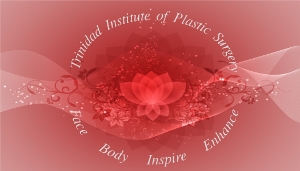 Scar treatment – what is the problem?
Scar treatment – what is the problem?
Scar treatment continues to be a basically unresolved problem in plastic surgery. As plastic surgeons we get multiple requests for consultations for scar removal in our Caribbean plastic surgery clinic at Trinidad Institute of Plastic Surgery. Unfortunately, the maximum plastic surgery (and anybody else!) can hope to provide in terms of scar treatment is improvement of scars. Issues a plastic surgeon can improve are width and size (e. g. widened, hypertrophic or keloid scars), abnormal color, contour (raised/depressed scars), itch, embedded foreign bodies, traumatic tattoos and a few others. In short, scar treatment attempts to turn unfavorable scars (with one or more of the above issues) into a favorable scar – like a pencil stroke without any of the issues above.
Scar treatment – what is the solution?
The classic textbook solution to scar treatment is a long and winding road called multi modality treatment. No single treatment can address all issues. Topical creams, steroid injections, silicon gel sheets, pulsed dye lasers, dermabrasion, peels, laser resurfacing, synthetic fillers and so forth have to be used on a per symptom basis. They usually improve just the one symptom they are used for.
In other situations the best scar treatment is to start back at square one and perform a surgical scar revision – in its most basic design an excision of the old unfavorable scar with careful resuturing. The trained and board certified plastic surgeon’s true expertise comes into play here as the technicalities can be surprisingly tricky. Every detail does play a role – from proper selection of suture material to atraumatic technique. The basic procedure may have to be escalated with local flap (Z-plasty, W-plasty, rotation / advancement) or regional flap techniques, skin grafting, tissue expansion, negative pressure wound therapy or in extreme cases microvascular free tissue transplantation (yes, still the only single stage predictable option for severely contracted scars over certain joints or in the neck) or synthetic tissue substitutes. The surgical option for scar treatment should be first choice for keloid scars, certain hypertrophic scars in in cosmetically and functionally important areas (face, major joints), contracted scars restricting joint movement or distorting appearance of the face and unstable scars (they break down repeatedly).
Scar treatment – where does fat grafting come in?
Fat grafting has now been part of the plastic surgeon’s mainstream armamentarium for over two decades. Much focus has been on fat’s role as a natural filler / volumizer, survival rate in a Brazilian butt lift or autologous breast augmentation, predicting possible post procedure volume enhancement and so forth.
However, fat is also the easiest source for obtaining mesenchymal stem cells and a variety of growth factors. In laboratory settings different tissues (not just fat) could be engineered from mesenchymal stem cells. Stem cell therapy and tissue regeneration seemed possible with a one milliliter syringe and a suitably small reinjection cannula. Well, we are not quite there yet. However, most plastic surgeons with sufficiently large case series of fat grafting used for different augmentation purposes made the anecdotal and completely unscientific experience that the skin quality had a tendency to spontaneously improve after fat grafting. Skin quality is a poorly measurable parameter and best understood as an anti-aging phenomenon (e. g. it just looks younger, healthier, more radiant and what have you not). Scar quality on the other hand can be measured. Quite uniformly scar treatment with autologous fat grafting does result in a measurable improvement even of difficult scars such as burn scars. As a stem cell therapy and regenerative technique fat grafting does improve color, firmness, appearance, three dimensional contour and so forth – according to multiple reports by multiple different surgeons.
In last month’s issue of Plastic and Reconstructive Surgery Negenborn et al. published an extensive systematic review about the use of autologous fat grafting for scar treatment (Plast. Reconstr. Surg. 2016; 137(1):31e-43e). Some of the results were sobering – over 17,000 articles had to be screened to find 26 human subject studies to which the authors with a lot of good will would pin the label “scientific” and further review. They did not fail to mention that even those 26 studies (with very few exceptions) exhibited methodology and thought process too inexact and erratic to permit pooling of the 905 patients for a meta-analysis – after over twenty years of worldwide clinical research in this very subject area! This may go to prove that plastic surgeons are fairly useless as scientists, but excellent technicians, innovators and observers as all reviewed 26 studies without fail or exception, no matter how badly designed and executed from a scientific standpoint showed one and the same thing time and again: fat grafting for scar treatment measurably improves scar quality even in the toughest and most difficult to treat scars such as burn scars. As opposed to other interventions used for scar treatment such as creams, steroid injections or lasers, which usually improves one scar problem, fat grafting resulted in improvements in multiple areas – itch, color, pain, contour, overall appearance – with no or very limited side effects!
Trinidad Institute of Plastic Surgery – the superior choice for scar treatment in the Caribbean, Antigua and Barbuda, The Bahamas, Barbados, Belize, Dominica, Grenada, Guyana, Haiti, Jamaica, Montserrat, Saint Lucia, St. Kitts and Nevis, St. Vincent and the Grenadines, Suriname, Trinidad and Tobago, Bermuda, British Virgin Islands, Cayman Islands, Turks and Caicos Islands, Miami, New York, Toronto, London